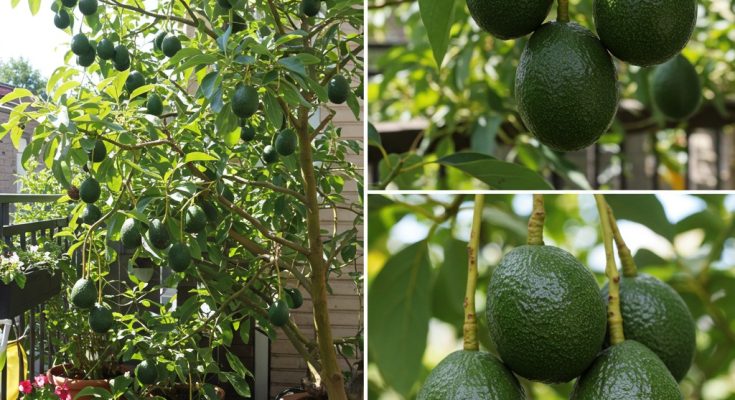Growing avocado trees from cuttings is a lesser-known but effective way to propagate the plant, especially when you want to reproduce the exact characteristics of a mature avocado tree. While growing from seed can be rewarding, cuttings offer a faster route to maturity and fruit production. With the right approach and care, you can successfully root avocado cuttings at home using natural techniques and materials—no synthetic rooting hormones needed.
Step 1: Select a Healthy, Mature Avocado Branch
The first and most important step is choosing the right branch for your cutting. Select a healthy, mature branch from an older avocado tree. Ideally, the branch should be semi-hardwood—not too young and green, but not overly woody either. Look for a branch that’s about the thickness of a pencil and around 6 to 8 inches long. Make sure it has a few healthy leaves and visible nodes (small bumps where roots and shoots can emerge).
Cut the branch cleanly using sharp, sterilized pruning shears. Make the cut just below a node, as this is where rooting is most likely to occur. Remove the leaves from the lower half of the cutting to prevent moisture loss and to create space for planting.
Step 2: Natural Root Hormone – Shallots
Instead of using synthetic rooting hormone, you can use shallots as a natural alternative. Shallots contain plant hormones and nutrients that stimulate root formation.
To make a natural root hormone from shallots:
-
-
Slice 1–2 shallots and crush them lightly to release their juices.
-
Blend them with a small amount of water.
-
Strain the mixture through a fine mesh or cloth to extract the juice.
-
Dip the base of the avocado cutting into this natural shallot solution and let it soak for 30 minutes to 1 hour. This will help encourage root growth while protecting the cutting from bacteria and fungi.
Step 3: Prepare the Planting Medium
Sand is an excellent medium for rooting avocado cuttings because of its drainage properties and its ability to retain moisture without becoming waterlogged. Use clean, coarse river sand or horticultural sand, and make sure it’s been rinsed to remove any debris or salts.
Fill a pot or seed tray with the moist sand. Use a container that has good drainage holes to prevent water buildup. You can sterilize the sand by baking it in the sun for a few hours or lightly heating it if needed.
Step 4: Plant the Cutting
Make a small hole in the center of the sand-filled pot and insert the treated avocado cutting about halfway into the medium. Firm the sand gently around the base of the cutting to hold it upright.
Water the sand lightly after planting, just enough to moisten the medium without soaking it. The key is to maintain consistent moisture while avoiding waterlogging.
Step 5: Provide the Right Environment
Avocado cuttings root best in warm, humid, and shaded environments. Place the pot in a location that receives bright but indirect light. Direct sunlight can dry out the cutting and reduce its chances of survival.
To maintain high humidity around the cutting, you can cover the pot with a clear plastic bag or place it in a mini greenhouse. Make sure there is some ventilation to prevent mold buildup. Water the sand 2 to 3 times a day using a spray bottle or gentle watering method to keep the humidity and moisture levels stable.
Step 6: Monitor Growth
In the first few weeks, the cutting will focus on developing roots. You may not see immediate changes above the surface, but with patience and proper care, roots will begin to form beneath the sand.
After 3–4 weeks, you may notice small shoots appearing from the top of the cutting. This is a good sign that rooting has taken place. To confirm, you can gently tug on the cutting—if you feel resistance, roots have likely developed.
Step 7: Transplanting
Once the cutting has developed a healthy root system and new growth is visible, it’s time to transplant it into a pot with nutrient-rich soil. Use a well-draining mix such as a blend of compost, sand, and loam. Water the new plant gently and place it in a shaded area for a few more days before gradually introducing it to more sunlight.
Final Result: A Thriving Avocado Plant from a Cutting
With time, the rooted cutting will grow into a strong, healthy avocado tree. This method is not only effective but also sustainable, using natural root stimulants and simple materials that are safe for home gardening. By taking care during each step—especially with humidity and moisture—you can increase the chances of success and enjoy growing avocado from cuttings in your own backyard.
Conclusion
Propagating avocado from cuttings is a smart and natural way to grow your own trees. With proper care, the right cutting, and a simple rooting solution made from shallots, you can achieve strong root development without synthetic chemicals. Give this method a try and enjoy the satisfaction of growing avocados the natural way.
